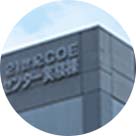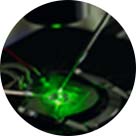Development of superior cells and DDS for accelerating regenerative medicine
History and Background of This Division
DDS research has been actively pursued at Tokyo University of Science since the early days. This division traces its origin to the DDS Research Division established in 2003 within the Research Institutes for Science and Technology at Tokyo University of Science. In 2015, the “Fusion of Regenerative Medicine with DDS Division” was launched under the leadership by Professor Kimiko Makino, focusing on collaborative research in regenerative medicine and the development of DDS for intractable diseases. To further advance these efforts, a predecessor roundtable entitled “Superior Cells and DDS Development for Regenerative Medicine” was launched in 2020, and this was formally re-established as a division in April 2021.
Research Purposes and Goals of This Division
With the overarching goal of accelerating cell-based therapies and regenerative medicine, the division aims to (1) develop “superior cells” by enhancing the functionality of therapeutic cells, and (2) establish DDS technologies that enable precise control over the in vivo behavior of cells and other bioactive agents. The division also targets the development of therapeutic modalities for diseases affecting the respiratory system, brain, immune system, cancer, and bone.
Members and Their Roles in This Division
The division consists of four collaborative groups that work together to advance integrated research:
(1) Superior Cell/DDS Development Group
This group focuses on designing and developing superior cells and DDS technologies to regulate the behavior and in vivo distribution of cells and bioactive compounds. The objective is to create “superior cells” that exceed conventional functionalities by incorporating novel functions, constructing multicellular spheroids and organoids, and leveraging extracellular vesicles such as exosomes. The group also applies DDS platforms to these cells and evaluates their efficacy in disease models.
(2) Cell Function Regulation System Development Group
This group is engaged in the creation of novel compounds that modulate cellular functions, as well as functional materials to support cell-based therapies and regenerative medicine. These developed tools are provided to other groups for application and evaluation, and the findings are used to refine and enhance the compounds and materials.
(3) Physical Property Control/Analysis Group
This group is responsible for evaluating the physicochemical properties of superior cells, DDS formulations, and functional materials developed by other groups. The results are fed back to improve the design and performance of these technologies.
(4) Cell/Tissue Regeneration Group
This group investigates the mechanism of tissue regeneration in organs such as the lung and bone and explores therapeutic interventions for related diseases. The group also studies interactions between superior cells/DDS and the immune system.
Figure 1
outlines the members and functional roles of each group. Through close collaboration among these teams, the division builds upon Tokyo University of Science’s legacy in DDS research while fostering a new phase of interdisciplinary advancement in cell-based therapies and regenerative medicine.

Figure 1 Members and roles of each group.











